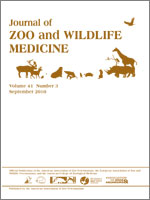This population-based, retrospective study examined the susceptibility of a prosimian primate, Coquerel's sifaka (Propithecus coquereli), to Cryptosporidium spp. over a 9-yr period from 1999 to 2007 at the Duke Lemur Center (DLC) located in Durham, North Carolina. The investigation examined potential epidemiologic risk factors that could be correlated to infectious outbreaks at the center, such as prevalence, signalment (species, age, and sex), seasonality of occurrence, recurrence rate, family lineage, parturition, clinical signs, and concurrent diseases or health conditions. Findings included Propithecus spp. being the only lemur species at the DLC showing clinical signs of infection, with age being an important factor in susceptibility, and showing a strong correlation between temperature and seasonality with shedding of Cryptosporidium oocysts. These findings present new information regarding cryptosporidiosis in captive prosimians.
How to translate text using browser tools
1 September 2010
Environmental and Physiological Factors Contributing to Outbreaks of Cryptosporidium in Coquerel's Sifaka (Propithecus coquereli) at the Duke Lemur Center: 1999–2007
Lauren E. Charles-Smith,
Peter Cowen,
Robert Schopler
ACCESS THE FULL ARTICLE
Coquerel's sifaka
Cryptosporidiosis
Cryptosporidium spp.
lemur
Propithecus coquereli





